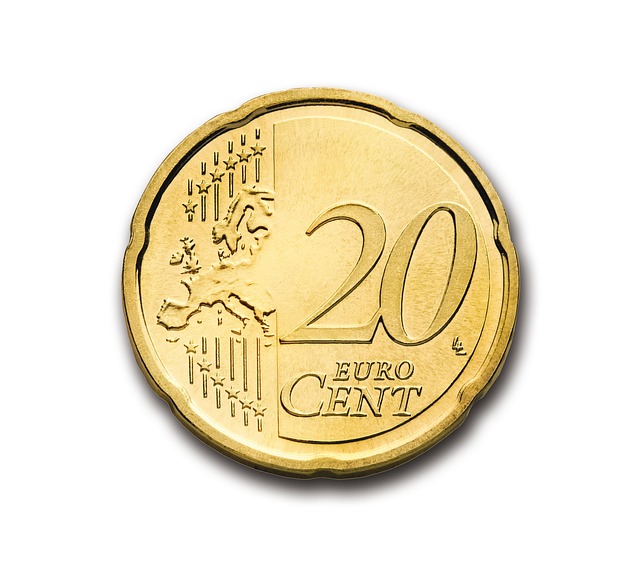money
Money: Unlocking the Power of Exchange
Introduction
Money, a universal concept yet complex in its myriad forms, serves as the lifeblood of modern societies. It transcends borders, cultures, and time, facilitating trade, fostering economic growth, and shaping our daily lives. This comprehensive article aims to delve into the intricate world of money, exploring its historical roots, global impact, underlying mechanisms, and future trajectories. By the end, readers will grasp the profound influence of money on our world and its ever-evolving nature.
Understanding Money: A Historical Perspective
Definition: Money, at its core, is a medium of exchange, a unit of account, and a store of value. It takes various forms, including physical coins and banknotes, as well as digital representations, each serving the fundamental purpose of facilitating economic transactions.
Historical Evolution: The concept of money has evolved over millennia, mirroring societal developments. Ancient civilizations used commodities like salt, shells, and livestock as early forms of exchange. However, the introduction of standardized coins during the 7th century BC in Lydia marked a significant shift. These coins, made from a mix of gold and silver, became widely accepted, leading to the birth of metallistic money.
Over time, currencies became more sophisticated, with the British pound sterling, French franc, and US dollar emerging as influential global standards. The 20th century saw the rise of paper currency and the digital age introduced the concept of electronic money. Today, we navigate a diverse monetary landscape, including cash, checks, credit cards, mobile payments, and cryptocurrencies.
Key Components: Money’s essence lies in three critical functions:
-
Medium of Exchange: Money allows for easy exchange of goods and services, eliminating the need for barter trade. It provides a common denominator, making transactions efficient and convenient.
-
Unit of Account: It serves as a standard measure to price goods and services, enabling comparisons and facilitating economic calculations. Different currencies have their units of account, like the dollar or euro.
-
Store of Value: Money retains its purchasing power over time, allowing individuals to save, invest, and plan for future purchases or financial goals.
Global Impact and Trends: A World Connected by Money
Money’s influence is profound and far-reaching, shaping global economies and cultures. Here’s an exploration of its impact on a worldwide scale:
| Region | Monetary System | Unique Features |
|---|---|---|
| North America | US Dollar, Canadian Dollar | Preeminent global reserve currencies, highly stable, and widely accepted |
| Europe | Euro | A unified currency used by 19 EU countries, promoting economic integration |
| Asia Pacific | Renminbi (China), Yen (Japan) | Rapidly growing economies with significant influence on regional markets |
| Middle East & Africa | Saudi Riyal, South African Rand | Diversified systems, some reliant on oil exports, others with unique historical notes |
Global Trends:
-
Digital Currency Adoption: Central banks worldwide are exploring or implementing digital currencies. Sweden’s Riksbank introduced a central bank digital currency (CBDC), while China’s Digital Currency Electronic Payment (DCEP) is gaining traction. These digital currencies promise faster, more efficient transactions and enhanced monetary policy control.
-
Fintech Revolution: The financial technology (fintech) sector is reshaping the way money is managed and transferred. Mobile wallets, peer-to-peer payments, and blockchain technologies are disrupting traditional banking models. For instance, Africa’s mobile money services have revolutionized access to financial services in underbanked regions.
-
Globalization of Currencies: The US dollar, Euro, and Yen remain dominant, but regional currencies are gaining prominence. The Renminbi’s increasing international use reflects China’s economic rise. This globalization presents opportunities for cross-border transactions but also challenges for monetary policy coordination.
-
Cashless Societies: Some countries, like Sweden and Denmark, are moving towards cashless economies, reducing the reliance on physical currency. This trend raises questions about financial inclusion and the digital divide.
Economic Considerations: Money in Motion
Money is a vital force within economic systems, influencing market dynamics, investment decisions, and overall growth.
Market Dynamics: Monetary policy, set by central banks, plays a crucial role in managing inflation, employment rates, and economic growth. Interest rate adjustments, open market operations, and reserve requirements are tools used to influence money supply and credit availability. These actions can stimulate or cool down an economy, affecting business cycles and consumer spending.
Investment Patterns: Money’s role as a store of value attracts investors seeking capital preservation and growth. Stock markets, bonds, real estate, and alternative investments offer various avenues for wealth accumulation. The global flow of investment capital, often influenced by monetary factors, can have significant impacts on asset prices and exchange rates.
Economic Growth and Stability: A well-managed monetary system contributes to economic stability and growth. It facilitates savings and investment, supports business expansion, and provides a stable environment for long-term financial planning. Conversely, poor monetary policies can lead to hyperinflation, economic crises, or currency devaluation, hampering economic development.
Technological Advancements: Shaping the Future of Money
Technology is revolutionizing money’s role in our lives, opening new avenues and challenging traditional systems.
Blockchain and Cryptocurrencies: Blockchain technology, underlying cryptocurrencies like Bitcoin, offers a decentralized and secure way to transfer value. It promises increased transparency, reduced transaction costs, and enhanced security. While cryptocurrencies face regulatory hurdles and volatility concerns, they have gained widespread attention as potential substitutes for traditional money.
Mobile Payments and Digital Wallets: The rise of smartphones has fueled the growth of mobile payments and digital wallets. Apple Pay, Google Pay, and AliPay enable fast, secure transactions, changing consumer behavior and challenging card-based payment systems. These technologies enhance convenience but also raise security and privacy concerns that must be addressed.
Central Bank Digital Currencies (CBDCs): As mentioned earlier, CBDCs represent the next evolution in digital money. They offer potential benefits like enhanced financial inclusion, faster settlement times, and improved monetary policy implementation. However, their successful adoption requires careful design to ensure privacy, security, and compatibility with existing systems.
Policy and Regulation: Guarding the Monetary Domain
Monetary policies and regulations are critical to maintaining stability, fostering growth, and protecting consumers.
Central Banking: Central banks act as guardians of a country’s monetary system, implementing monetary policy and overseeing financial stability. They conduct open market operations, set interest rates, and serve as lenders of last resort to ensure a stable banking system. The Federal Reserve in the US, Bank of England, and European Central Bank (ECB) are prominent examples.
Financial Regulation: Regulatory bodies oversee financial markets, banks, and other institutions to prevent systemic risks and protect consumers. These regulations include capital requirements, liquidity rules, consumer protection laws, and anti-money laundering measures. The Global Financial Crisis of 2008 underscored the importance of robust regulation in mitigating financial instability.
International Cooperation: Global economic interdependence necessitates international cooperation in monetary policy and regulation. Organizations like the Bank for International Settlements (BIS) facilitate dialogue, research, and standard-setting to promote global financial stability.
Challenges and Criticisms: Navigating the Money Maze
Money faces numerous challenges and criticisms, many of which require innovative solutions to ensure its effectiveness and fairness.
Financial Inclusion: Access to financial services remains a challenge in many developing countries, hindering economic growth and social development. Traditional banking models often exclude low-income individuals and small businesses due to high costs and stringent requirements. Fintech innovations offer potential solutions, but ensuring digital literacy and security is crucial for widespread adoption.
Economic Inequality: Money can exacerbate wealth disparities, with unequal access to financial resources and opportunities. High-interest rates, predatory lending practices, and asset price bubbles can disproportionately affect vulnerable populations. Inclusive monetary policies, affordable credit options, and regulatory oversight are necessary to mitigate these issues.
Volatility and Market Speculation: Money markets can be volatile, influenced by speculation, geopolitical events, and psychological factors. This volatility may lead to market crashes, currency devaluations, or asset bubbles, impacting investors and the broader economy. Robust regulation, transparency, and financial literacy can help mitigate these risks.
Cybersecurity and Privacy: The digital transformation of money raises significant cybersecurity and privacy concerns. As more transactions move online, hackers and cybercriminals target financial institutions and individuals. Enhanced security measures, encryption technologies, and regulatory frameworks are essential to protect sensitive data and maintain trust in digital payment systems.
Case Studies: Successful Money Applications and Lessons Learned
Case 1: Mobile Money in Kenya (M-Pesa)
M-Pesa, Kenya’s mobile money transfer service, has transformed financial services in a country with a significant unbanked population. It allows users to send and receive money using mobile phones, offering an accessible, convenient, and affordable alternative to traditional banking. M-Pesa’s success lies in its understanding of local needs, innovative technology, and strong partnerships.
Lessons:
- Financial inclusion can be achieved through mobile technologies tailored to local contexts.
- User-friendly interfaces and simple transaction processes enhance adoption.
- Public trust and government support are vital for widespread acceptance.
Case 2: Digital Currency in China (Digital Yuan)
China’s digital yuan, or Digital Currency Electronic Payment (DCEP), is a central bank digital currency designed to improve the efficiency and security of transactions. It leverages blockchain technology to facilitate real-time payments and offers benefits like lower transaction costs, enhanced anti-counterfeiting measures, and targeted monetary policy implementation.
Lessons:
- CBDCs can enhance financial inclusion by providing access to the unbanked and underbanked.
- Blockchain technology ensures security, transparency, and efficiency in digital transactions.
- Central bank involvement is crucial for public acceptance and stability.
Future Prospects: Money’s Horizon
The future of money is brimming with potential growth areas, emerging trends, and strategic considerations.
Growth Areas:
-
CBDCs and Digital Currencies: The global shift towards digital currencies is expected to continue, driven by technological advancements and the need for more efficient payment systems. CBDCs could revolutionize cross-border payments, reduce settlement times, and provide financial services to the unbanked.
-
Fintech Innovation: Fintech will continue to disrupt traditional banking models, offering personalized financial services, improved customer experiences, and innovative products like decentralized finance (DeFi) and tokenized assets.
-
Sustainable Finance: As environmental concerns grow, money’s role in promoting sustainability will intensify. Green bonds, impact investing, and carbon markets are expected to expand, aligning financial systems with global sustainability goals.
Emerging Trends:
-
Web3 and Decentralization: The concept of Web3, based on blockchain technology and decentralization, challenges traditional centralized institutions. Decentralized finance (DeFi) platforms offer lending, borrowing, and trading services without intermediaries, potentially democratizing access to financial services.
-
Central Bank Digital Currencies (CBDCs): Beyond the early adopters, more central banks are exploring CBDCs. Countries like Sweden, Japan, and India are in various stages of implementation, driven by the potential for enhanced financial inclusion and efficiency.
Strategic Considerations:
-
Regulatory Adaptability: Monetary authorities must adapt to rapidly evolving technologies and market dynamics. Agile regulatory frameworks that encourage innovation while managing risks will be crucial.
-
Financial Inclusion and Literacy: Ensuring access to financial services and enhancing digital literacy are essential for a more inclusive monetary future. Collaboration between governments, financial institutions, and technology providers is necessary.
-
Cybersecurity and Privacy: As money becomes increasingly digital, safeguarding transactions and data becomes paramount. Strong cybersecurity measures, encryption technologies, and user privacy protections are vital.
Conclusion: Money’s Enduring Impact
Money, an ancient yet ever-evolving concept, continues to shape our world in profound ways. From facilitating trade to influencing economic policies, money is the lifeblood of modern societies. As we navigate the digital age, its role becomes increasingly complex and multifaceted. The global monetary landscape is dynamic, with technological innovations, policy shifts, and regional variations constantly reshaping the way we understand and use money.
By embracing innovation, fostering regulatory cooperation, and prioritizing financial inclusion, we can harness money’s full potential to drive economic growth, promote stability, and enhance the lives of people worldwide. The future of money promises exciting possibilities, but it also presents challenges that require careful navigation. As we delve into this ever-changing domain, one thing remains clear: money will continue to be a powerful force shaping our collective destiny.
FAQ Section: Unlocking Common Money Questions
Q: What is the difference between cash and digital money?
A: Cash refers to physical currency, like banknotes and coins, while digital money includes electronic representations of value, such as mobile payments, online banking, and cryptocurrencies. Digital money offers convenience, speed, and enhanced security but relies on technological infrastructure.
Q: How does inflation affect money’s value?
A: Inflation is a sustained increase in the general price level of goods and services over time. It erodes the purchasing power of money, meaning each unit buys fewer goods or services. Central banks use monetary policy tools to manage inflation rates, aiming for stability to preserve money’s value.
Q: What are the potential risks associated with cryptocurrencies?
A: Cryptocurrencies offer decentralization and security but also face several risks. Volatility is a significant concern, as asset prices can fluctuate dramatically. Regulatory uncertainty, cybersecurity threats, and energy consumption related to mining are additional challenges. It’s crucial for investors to understand these risks before engaging with cryptocurrencies.
Q: How does monetary policy impact interest rates?
A: Central banks adjust monetary policy by manipulating various tools, including setting target interest rates. Lower interest rates encourage borrowing, investment, and consumer spending, while higher rates can cool down an overheating economy. These adjustments influence money supply, credit availability, and overall economic activity.
Q: What is the role of international organizations in global monetary affairs?
A: International organizations like the IMF, World Bank, and BIS play vital roles in fostering global financial stability and cooperation. They provide policy advice, lend to countries during crises, and promote dialogue among nations to address monetary challenges and support economic growth.













